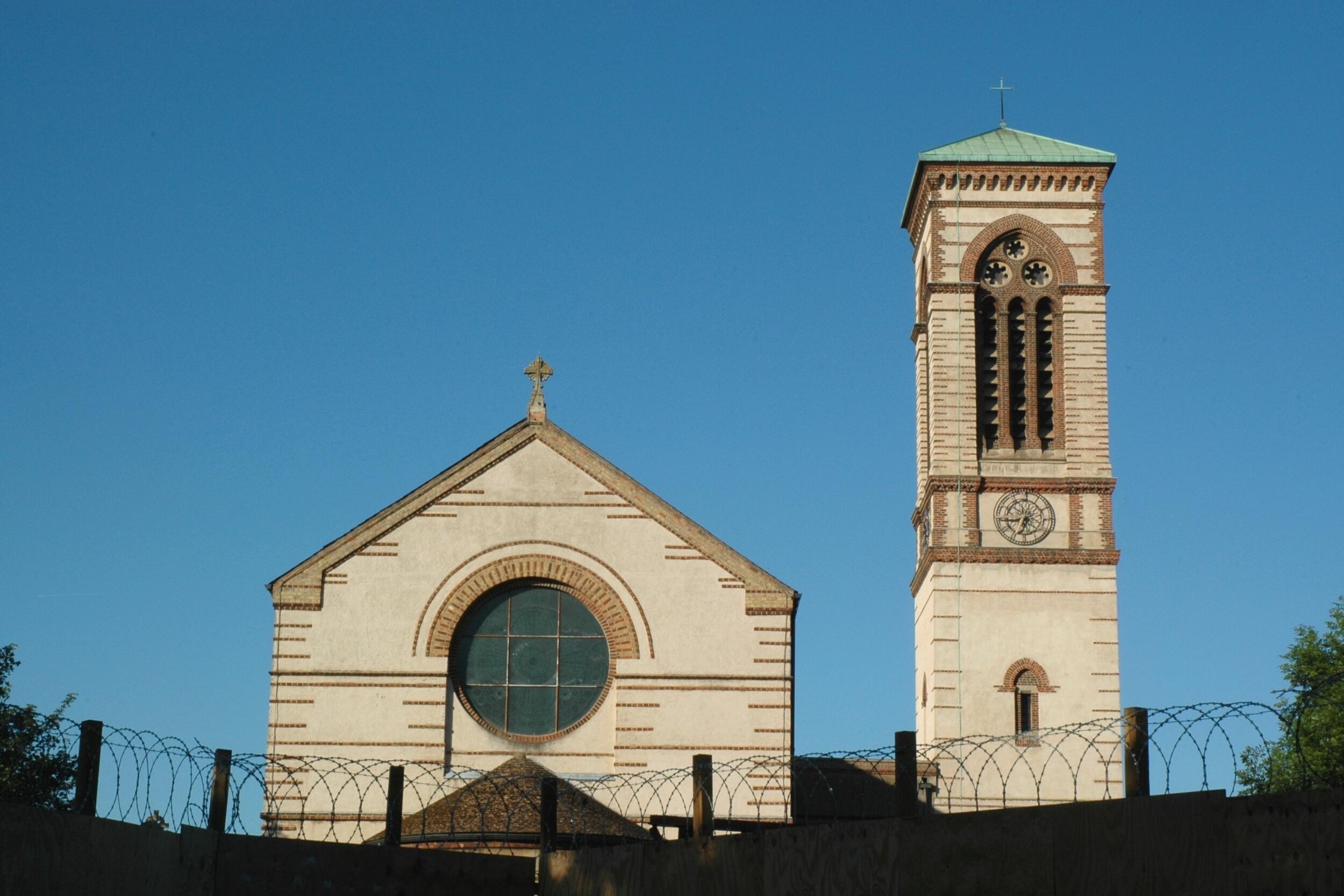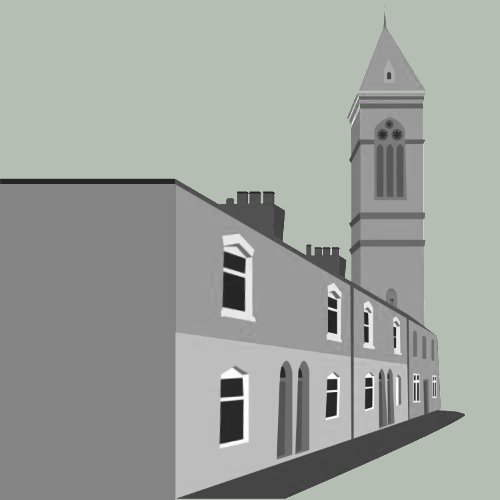
St Barnabas Church
The old Jericho boatyard is adjoined by Jericho's architectural literal high spot and its most important building: Sir Arthur Blomfield's church of St. Barnabas, whose basilica was modelled on the style of the cathedral of Torcello, near Venice. The church was chosen by Thomas Hardy, who had worked as an assistant to Blomfield, for a scene in Jude the Obscure where he describes the church's levitating cross – seemingly suspended in mid-air by barely visible wires and swaying gently – beneath which lay the crumpled, prostrate figure of Sue Bridehead, forlornly covered in a pile of black clothes.
St Barnabas' lofty Byzantine tower was described by A. N. Wilson in his novel The Healing Art as "the most impressive architectural monument in sight". Robert Martin (biographer of the poet Gerard Manley Hopkins) records a University friend of Hopkins as saying "When I want a spiritual fling I go to St Barnabas."
The church was mournfully acclaimed by John Betjeman in his poem 'St Barnabas, Oxford', and with the subtly complex earth-tones of its tracery (what Betjeman described as the polychromatical lacing of bricks) and its Romanesque style the church is a paragon of Pre-Raphaelite taste - not unsurprisingly since it was Thomas and Martha Combe who enabled it to be built and were the movment’s principal early benefactors. The land on which it now stands was provided by the Ward family of coalmerchnats and boatbuilders.
One of the most devastating effects of the proposed boatyard development would be the loss of St Barnabas Church’s unencumbered visual impact from the canal, plus the view up and down Cardigan Street to and from the Radcliffe Observatory. Surely Oxford deserves a development which shows greater cultural and environmental awareness than this?
St Barnabas, Oxford
How long was the peril, how breathless the day,
In topaz and beryl, the sun dies away,
His rays lying static at quarter to six
On polychromatical lacing of bricks.
Good Lord, as the angelus floats down the road
Byzantine St Barnabas, be Thine Abode.
Where once the fritillaries hung in the grass
A baldachin pillar is guarding the Mass.
Farewell to blue meadows we loved not enough,
And elms in whose shadows were Glanville and Clough
Not poets but clergymen hastened to meet
Thy redden’d remorselessness, Cardigan Street.
Musical version by Steph Pirrie
John Betjeman
